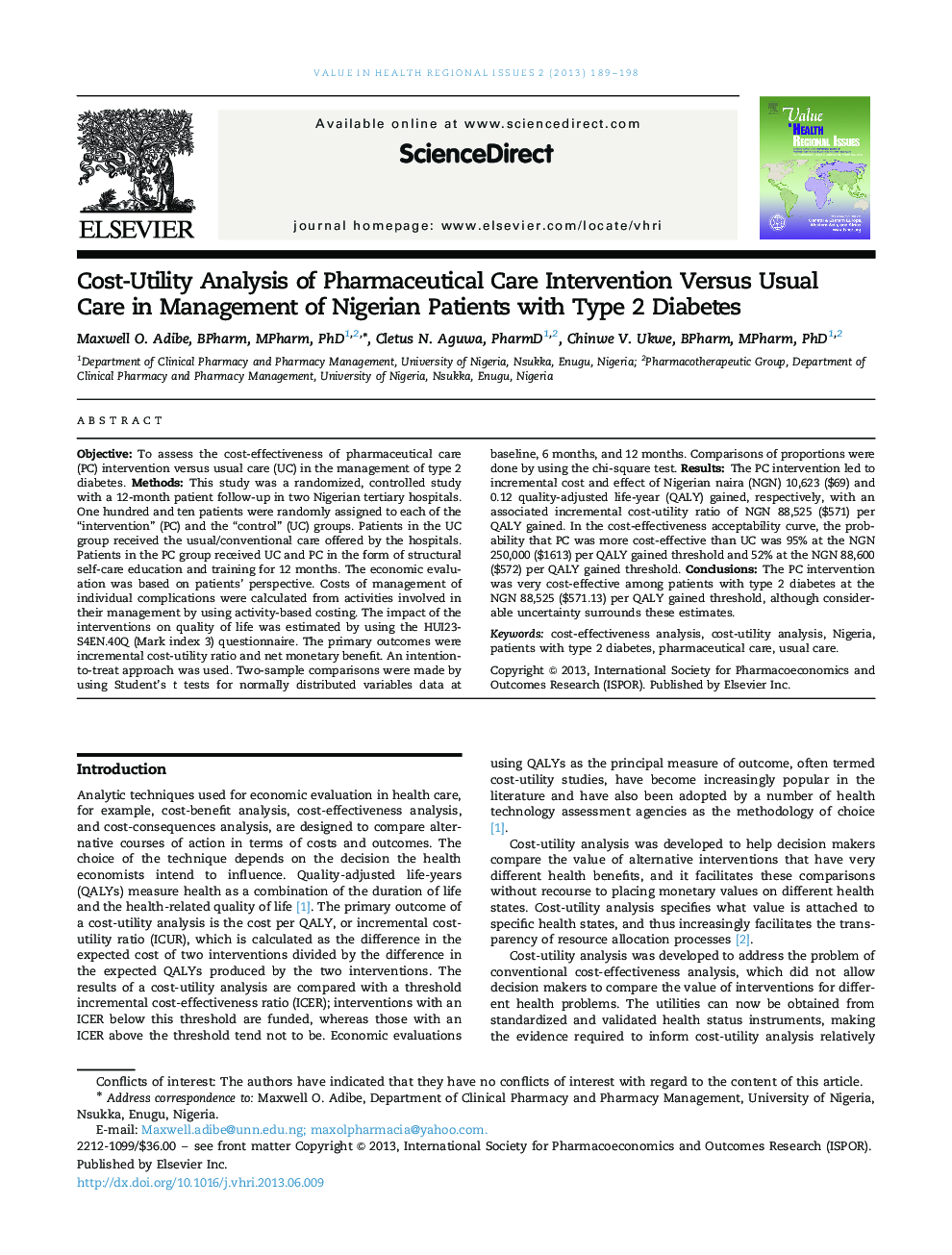| کد مقاله | کد نشریه | سال انتشار | مقاله انگلیسی | نسخه تمام متن |
|---|---|---|---|---|
| 990926 | 935568 | 2013 | 10 صفحه PDF | دانلود رایگان |
ObjectiveTo assess the cost-effectiveness of pharmaceutical care (PC) intervention versus usual care (UC) in the management of type 2 diabetes.MethodsThis study was a randomized, controlled study with a 12-month patient follow-up in two Nigerian tertiary hospitals. One hundred and ten patients were randomly assigned to each of the “intervention” (PC) and the “control” (UC) groups. Patients in the UC group received the usual/conventional care offered by the hospitals. Patients in the PC group received UC and PC in the form of structural self-care education and training for 12 months. The economic evaluation was based on patients’ perspective. Costs of management of individual complications were calculated from activities involved in their management by using activity-based costing. The impact of the interventions on quality of life was estimated by using the HUI23S4EN.40Q (Mark index 3) questionnaire. The primary outcomes were incremental cost-utility ratio and net monetary benefit. An intention-to-treat approach was used. Two-sample comparisons were made by using Student’s t tests for normally distributed variables data at baseline, 6 months, and 12 months. Comparisons of proportions were done by using the chi-square test.ResultsThe PC intervention led to incremental cost and effect of Nigerian naira (NGN) 10,623 ($69) and 0.12 quality-adjusted life-year (QALY) gained, respectively, with an associated incremental cost-utility ratio of NGN 88,525 ($571) per QALY gained. In the cost-effectiveness acceptability curve, the probability that PC was more cost-effective than UC was 95% at the NGN 250,000 ($1613) per QALY gained threshold and 52% at the NGN 88,600 ($572) per QALY gained threshold.ConclusionsThe PC intervention was very cost-effective among patients with type 2 diabetes at the NGN 88,525 ($571.13) per QALY gained threshold, although considerable uncertainty surrounds these estimates.
Journal: Value in Health Regional Issues - Volume 2, Issue 2, September–October 2013, Pages 189–198
